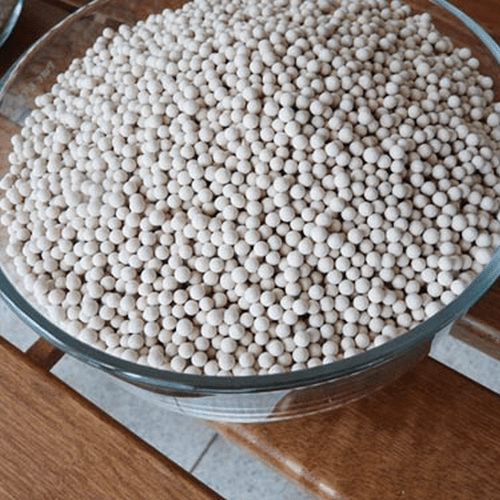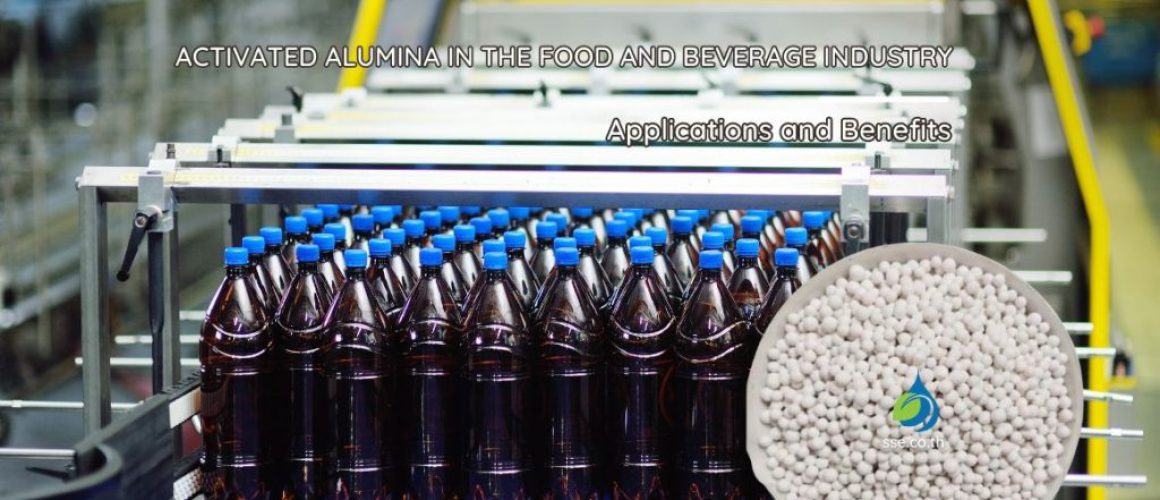Activated Alumina in the Food and Beverage Industry: Ensuring Quality and Safety
| Key Aspect | Details |
|---|---|
| Role in Compressed Air | Removes moisture to prevent microbial growth and equipment corrosion, ensuring product safety. |
| Gas Purification | Used for purifying gases like nitrogen, oxygen, and CO2 to maintain product quality. |
| Food Processing | Controls humidity in storage and processing areas to prevent spoilage. |
| Beverage Production | Ensures purity of gases used in carbonation and preservation, maintaining taste and shelf life. |
| Packaging Use | Keeps optimal moisture levels in packaging to maintain product freshness. |
| Advantages | High adsorption, chemical stability, reusable, environmentally friendly. |
Table of Contents
Introduction
Activated alumina plays a crucial role in maintaining the quality and safety of food and beverage products throughout their production and packaging processes. Its unique properties, such as high adsorption capacity and chemical stability, make it an ideal choice for a wide range of applications in the food and beverage industry. This article will explore the role of activated alumina in preserving the quality and safety of food and beverage products, such as in the drying of compressed air and gases used in production and packaging processes.
The Role of Activated Alumina in the Food and Beverage Industry
Compressed Air Drying
Compressed air is widely used in the food and beverage industry, and activated alumina ensures its quality by efficiently removing moisture. This is crucial, as excess moisture in compressed air can lead to microbial growth and corrosion in equipment, ultimately compromising the safety and quality of the final product. Activated alumina’s high adsorption capacity allows it to effectively remove water vapor from the compressed air, helping to maintain the necessary dryness levels throughout the production process.
Gas Purification
Gases such as nitrogen, carbon dioxide, and oxygen are used in various food and beverage applications, and activated alumina helps purify them to maintain product safety. These gases are often employed in processes such as modified atmosphere packaging, carbonation, and preservation, where their purity is essential to ensure the quality and safety of the end product. Activated alumina serves as an efficient adsorbent for removing impurities, such as water vapor and volatile organic compounds, from these gases, helping to maintain their purity and prevent contamination of food and beverage products.

Applications of Activated Alumina in the Food and Beverage Industry
Food Processing and Storage
Activated alumina is used in food processing and storage facilities to regulate humidity levels and prevent spoilage or contamination. Excess moisture in these environments can lead to mold growth, bacterial contamination, and a decrease in product shelf life. By efficiently adsorbing moisture, activated alumina helps maintain the ideal humidity levels required for food processing and storage, ensuring the quality and safety of the final product.
Beverage Production
In beverage production, activated alumina plays an essential role in maintaining the purity of gases used in carbonation and preservation processes. Carbonated beverages require the addition of carbon dioxide, while other beverages may use nitrogen or oxygen for preservation purposes. Impurities in these gases can affect the taste, appearance, and shelf life of the final product. Activated alumina’s exceptional adsorption properties enable it to purify these gases effectively, ensuring their suitability for use in beverage production.
Packaging
Activated alumina’s moisture-absorbing properties make it ideal for preserving the freshness of food products during packaging. The packaging process often exposes food products to varying levels of humidity, which can lead to moisture-related issues such as spoilage and reduced shelf life. By incorporating activated alumina into the packaging materials or using it as a desiccant, manufacturers can help maintain the optimal moisture levels required for food preservation, ensuring the quality and safety of the final product.
Advantages of Using Activated Alumina in the Food and Beverage Industry
High Adsorption Capacity
Activated alumina’s high adsorption capacity allows it to efficiently remove moisture and impurities in various food and beverage applications. Its porous structure and large surface area enable it to adsorb water vapor and other contaminants effectively, making it a valuable asset in maintaining product quality and safety throughout the production process.
Regeneration and Reusability
The ability to regenerate and reuse activated alumina makes it a cost-effective option for maintaining quality and safety in the food and beverage industry. By heating the spent alumina to remove adsorbed contaminants, it can be regenerated and reused multiple time, reducing the overall cost of operation and minimizing waste generation.
Chemical Stability
Activated alumina’s chemical stability ensures that it does not react with the food and beverage products or gases it comes into contact with during the production process. This characteristic is essential for maintaining the quality and safety of the final product, as the introduction of contaminants through chemical reactions could have detrimental effects on the taste, appearance, and shelf life of the product.
Environmentally Friendly
Activated alumina is an environmentally friendly choice for food and beverage applications, as it is a non-toxic, inert material that poses minimal risk to the environment. Additionally, its ability to be regenerated and reused reduces the need for disposal, minimizing the environmental impact of its use in the industry.
Frequently Asked Questions
Why is moisture control crucial in the food and beverage industry?
Moisture control is essential in the food and beverage industry to maintain the quality and safety of products. High humidity levels can lead to the growth of mold and bacteria, deterioration of food quality, and shorter shelf life.
How does activated alumina maintain the freshness of food and beverage products during packaging?
Activated alumina maintains the freshness of food and beverage products during packaging by regulating the humidity levels within the packaging. It adsorbs excess moisture that can lead to spoilage, ensuring the products remain fresh and safe for consumption.
Is activated alumina FDA approved for use in the food and beverage industry?
While activated alumina itself is not specifically FDA approved, it is widely considered safe for use in the food and beverage industry due to its chemical stability and non-toxic nature. However, specific uses and applications may require compliance with FDA regulations.
How does activated alumina contribute to the environmental sustainability of the food and beverage industry?
Activated alumina contributes to the environmental sustainability of the food and beverage industry by being reusable and minimizing waste generation. Its ability to be regenerated and reused reduces the need for disposal, and its high adsorption capacity minimizes waste from the production process.
Why is activated alumina preferred over other desiccants in the food and beverage industry?
Activated alumina is preferred over other desiccants in the food and beverage industry due to its high adsorption capacity, chemical stability, and the ability to be regenerated and reused. These characteristics make it an economical and efficient choice for moisture control in this industry.
What is the use of activated alumina in the food and beverage industry?
Activated alumina is used in the food and beverage industry to dry compressed air, purify gases used in production and packaging processes, regulate humidity levels in food processing and storage facilities, and maintain product freshness during packaging.
What are the advantages of activated alumina?
Activated alumina offers several advantages, including high adsorption capacity, chemical stability, regeneration and reusability, and being environmentally friendly.
Is activated alumina safe for use in the food and beverage industry?
Yes, activated alumina is considered safe for use in the food and beverage industry due to its chemical stability, non-toxic nature, and inert properties.
How does activated alumina remove moisture from compressed air and gases?
Activated alumina’s porous structure and large surface area enable it to effectively adsorb water vapor and other contaminants from compressed air and gases, ensuring their purity and suitability for use in food and beverage production processes.
How can activated alumina be regenerated and reused?
Activated alumina can be regenerated by heating it to remove adsorbed contaminants, allowing it to be reused multiple times in food and beverage applications, reducing costs and minimizing waste generation.
Conclusion: Preserving Quality and Safety with Activated Alumina
Activated alumina is a vital asset for preserving the quality and safety of food and beverage products, thanks to its remarkable adsorption properties, chemical stability, and eco-friendly profile. From moisture removal to impurity filtration in compressed air, it helps maintain optimal conditions throughout production and packaging processes.
To fully understand the versatility of activated alumina, we invite you to explore other applications of Activated Alumina in diverse industries. From gas purification and moisture control to catalytic processes, activated alumina plays a critical role in enhancing efficiency and ensuring quality across a range of industrial uses.
To explore other applications of activated alumina, visit our articles on its uses in the pharmaceutical industry and high-quality paint production. For a comprehensive understanding, check out this guide. You can also find more details about the product we offer here, or explore an in-depth external study on its preparation and characterization on ResearchGate.
